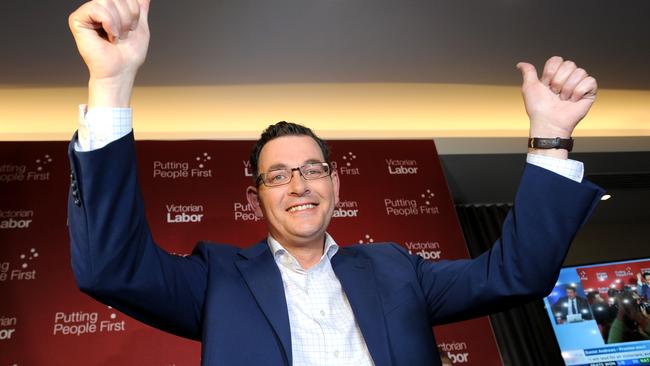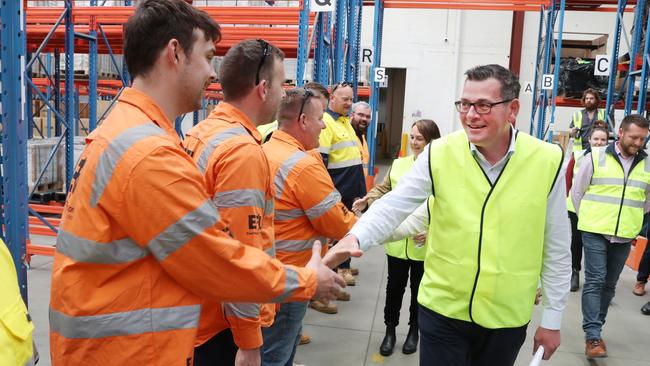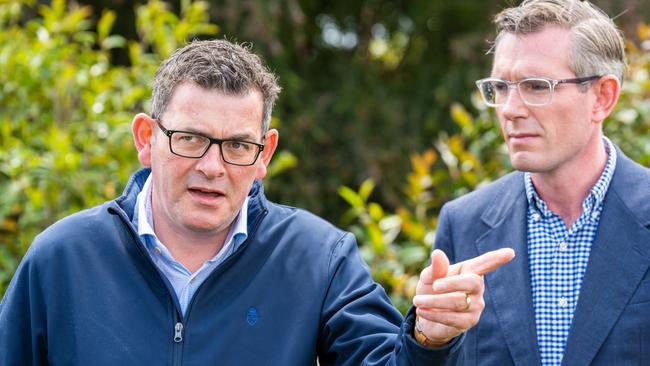Shannon Deery: Measuring the impact of the Andrews government
Victoria once boasted it was the place to be. When the polls open in just two weeks’ time, will voters agree it still is?

Opinion
Don't miss out on the headlines from Opinion. Followed categories will be added to My News.
Is Victoria better placed now than when the Andrews Government first came to power in 2014?
If we wind the clock back eight years, is life easier now, or becoming more difficult?
After two terms of Daniel Andrews at the helm, is our great state still the place to be?
Pre-polling opens in just two weeks, and many will be casting their votes with these questions in mind.
For all intents and purposes the second term of the Andrews Government is now over.
With caretaker mode kicking in from 6pm Tuesday, the work of the government is done.
Any legislation still before parliament will lapse, and all parliamentary committee inquiries will cease.
The business of government continues, but there will be no major policy decisions, no significant appointments, and no major contracts inked.
Andrews can, and has, been accused of many things.
Sitting on his hands is not one of them.
His bold infrastructure agenda and socially progressive politics has driven wholesale change across the state.
Almost 70 level crossing removals have been completed, the Metro rail project is well underway, as is the North East link.

There have been huge cost blowouts and delays — the Westgate tunnel should have been opened by now — but there’s always something happening.
Objectively, the state’s infrastructure program is far better than it was in 2014, although it has been contingent on massive borrowing at what were low interest rates.
Under Andrews, public drunkenness has been decriminalised, we’ve seen the introduction of a spent convictions scheme and ban on change or suppression conversion practices.
There’s been reforms on issues including voluntary assisted dying, safe access zones for women’s health services, childhood vaccination, and medicinal cannabis.
There’s also been rental law reforms, the banning of puppy farms and pet store sales, and the introduction of free kinder.
The government has so far implemented 204 of the 227 recommendations from the landmark royal commission into family violence.
And a historic deal was reached with traditional owners to see Victoria become the first state to begin treaty negotiations with First Nations groups.
Comparing metrics across key government responsibilities between 2014 and now offers an interesting insight.
Debt has spiralled out of control.
The government blames Covid, but Victoria’s budget first went into deficit by almost $1bn in 2019, well before Covid was a thing.
In 2014 net debt to gross state product was sitting at 10.2 per cent.
Now, with Victoria on track to record debt levels of $162bn, it’s more than double that at 22.6 per cent.
Then, net result from transactions for the general government sector was a surplus of $2.0 billion.
Victoria is currently on track to record a $9.7bn deficit in 2022-23 — $1.8bn worse than thought.

The state’s wages bill has almost doubled from $18bn to $32bn, representing a one per cent increase as a proportion of GSP.
Our public sector, as a proportion of the total employed population, is the worst in the country.
Tax, too, has almost doubled from $16.9 billion in 2013-2014 to $30.5bn.
Victorian businesses pay the highest national and state taxes relative to gross state product in the country.
The health system is no better than it was.
Ahead of his first term in government in 2014, Andrews made repairing the health system a major plank of his campaign.
Despite reaching record levels before Covid, ambulance response times are now worse than they were before Labor came to power.
Surgery waiting list times for urgent category one procedures are rising and our hospitals are overrun.
Education has taken a massive hit with new data out this week blaming Victoria’s long lockdowns for the state’s students posting the biggest drops in Australia in NAPLAN tests.
Victoria was the only state to have recorded “substantial decreases” in the past year, however remained among the better performing states across most measures.
Our public housing authority, Homes Victoria, is under threat with a massive bailout needed to save it from financial collapse.
Crime, however, is marginally better than it was.
According to the Crimes Statistics Agency the crime rate has improved from 7,806 offences per 100,000 people in 2014 to 7,121 offences per 100,000 people today.
In 2014 Melbourne was voted the world’s most liveable city for the fifth consecutive year.
We’re currently 10th on that same list.
A report by the Victorian Chamber of Commerce and Industry argues Victoria is now the hardest state to do business in.
Across the states and territories we ranked sixth for affordability and labour productivity and seventh on the number of permits needed to start a business.
The number of people leaving Victoria suggests pride for the Big V is not what it once was.
Ours was the only state or territory to record a decrease in population in 2021.
Between 2014-15 99,400 people flocked to the state — the second-largest population increase of any state or territory, behind New South Wales.
Victoria once boasted it was the place to be.
When the polls open in just two weeks’ time, will voters agree that it still is?





